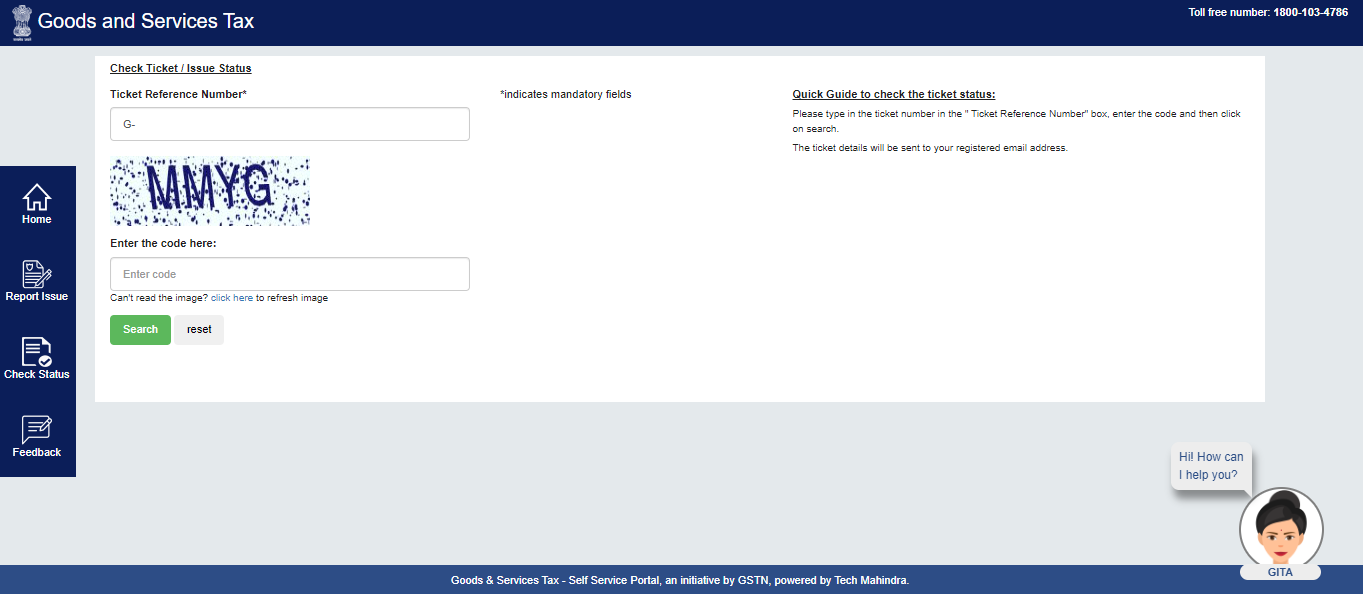Understanding the difference between GST inclusive and GST exclusive pricing is crucial in navigating the world of taxation. These terms refer to how goods and services tax (GST) is displayed and calculated in transactions.
In this guide, we’ll delve into the definitions, disparities, and practical implications of GST inclusive versus GST exclusive pricing, shedding light on their significance for businesses and consumers alike.
Introduction to GST (Goods and Services Tax)
GST also known as Goods and Services Tax is an indirect tax in India that is applied to the supply of goods and services. It has replaced multiple indirect taxes, including VAT, excise duty, Service taxes, and many more.
GST has been introduced in India since 2000 under a committee set by then prime minister Atala Bihari Vajpayee and headed by Finance Ministry advisor, Vijay L. Kelkar who said that GST could help to improve the tax structure of the country. But it finally came into force on the 1st of July, 2017 after four supplementary GST bills were passed in Lok Sabha and approved by the Cabinet.
The GST Service tax has many foundational objectives for instance:
- It eliminates multiple tax effects and decreases the tax on goods.
- Apart from a few, indirect taxes under the state and central government are subsumed into Goods and Services Tax.
- A broader tax base is more likely to result in higher revenue through GST services for the Government.
- The overall productivity is expected to increase by subsuming the entry tax.

GST has almost replaced 17 indirect taxes with one single tax.
There are 4 taxes under GST, known as CGST, SGST, IGST, and UTGST. Let’s discuss them one by one to understand the difference between them:
| Central GST |
|
| State GST |
|
| Integrated GST |
|
| Union Territory GST |
|
There are two methods to tax goods. Understanding if the price of a commodity will increase at checkout may be complex and time-consuming for the average customer.
Owners of businesses must realize tax-inclusive and tax-exclusive expenses to execute a system that can work best for their company. GST-inclusive and Exclusive pricing can help in understanding typical tax strategies and managing expenses by distinguishing them.
Also Read: GST: Everything You Need To Know
Understanding GST Inclusive Pricing
GST-inclusive pricing implies that the price paid for products and services comprises tax as a part of the total summed-up price that is charged to the customer. Tax is not added to the purchase and will not be delivered individually.
Let’s assume a business owner is selling a product worth Rs. 20,000, which includes GST, and the GST rate is again 20%. So, the item rate on the online accounting software will be calculated as:
Rs. 20,000 inclusive tax of 20%, Hence original product value is 16,667.
GST value 3,333.
Essentials for GST Inclusive Pricing
- A set price is paid by the customers for a product or service.
- Tax rates are always calculated before transactions; thus the unit price will be lower before the tax percentage is applied.
- GST Inclusive Pricing is a common process to describe income tax rates.
When Can You Use the Term Inclusive GST?
One can use GST-inclusive pricing when the MRP (Maximum Retail Price) is printed on products that are sold in retail shops, websites, and advertising. Sometimes when the seller plans to keep his products’ price cheaper than competitors by not charging customers GST, therefore keeping the GST Inclusive Pricing.
Understanding GST Exclusive Pricing
When the tax is not included in the pricing of products and services it’s an Exclusive pricing. GST Exclusive pricing is paid individually. Here the online accounting software will calculate it in addition to the rate of the item or service:
Let’s assume an owner selling a product of 10000, excluding GST, and the tax rate applied is 18%. In this case, the buyer needs to pay 10000 + the 18% GST on Rs 10000. So the total money the buyer needs to pay is 11,800.
Key Difference Between GST Inclusive and Exclusive Pricing
Having a proper grasp of the differences between GST Inclusive Pricing and Exclusive Pricing rates can be helpful to a business owner who is interested in increasing his profits.
Let’s understand and know the key differences between them:
| GST Inclusive Pricing | GST Exclusive Pricing |
| GST-inclusive pricing will always include taxes in the total that you can see in the unit pricing. | GST Exclusive Pricing rates will only include taxes applied to your total at purchase. |
| Tax-inclusive rates are higher than Exclusive rates. | Tax-exclusive rates are comparably lower than tax-inclusive rates. |
Also Read: What Is The Difference Between Inclusive And Exclusive Tax Computation?
How to Calculate GST Inclusive Pricing and GST Exclusive Pricing?
To calculate GST, the taxpayer should know the GST rate that is applied to various categories. The different slabs for GST are 5%, 12%, 18% and 28%.
GST calculation can be explained by the following example.
Let’s assume a good or service is sold at Rs. 1,000 and the GST rate applied is 18%, then the net price calculated will be = 1,000+ (1,000X(18/100)) = 1,000+180 = Rs. 1,180.
GST Calculation Method
To calculate GST, a taxpayer can use the below-mentioned formula:
To add GST to the base amount:
Add GST
GST Amount = ( Original Cost * GST% ) / 100
Net Price = Original Cost + GST Amount
To remove GST from the base amount:
Remove GST
GST Amount = Original Cost – (Original Cost * (100 / (100 + GST% ) ) )
Net Price = Original Cost – GST Amount
How to Use GST Calculation Tool
Discussed below are steps to be followed for calculating GST through the GST Calculation Tool:
Step 1: First select GST Inclusive/GST Exclusive as per your requirement.
Step 2: After choosing your requirement enter the original amount.
Step 3: Now you have to select the GST rate from the drop-down section of the menu list.
Step 4: Next you must click on calculate to check the result.
The result will show the total GST amount and pre-GST/post-GST amount as per your original requirement.
How to calculate GST in case of reverse charge?
When in the case of reverse charge also, the calculation will be the same. For instance, you have purchased goods worth Rs. 5,000 and you are required to pay GST on reverse charge at the rate of 18%. So you must pay a GST on the reverse charge of Rs. 900 (5,000 x 18%). If CGST & SGST is to be applied then CGST & SGST of Rs. 450 each is to be paid.
Advantages of GST Calculator
There are numerous benefits of using a GST calculator :
| Accuracy |
|
| Time saver |
|
| Compliance |
|
| Cost saver |
|
| Transparency |
|
| Better Pricing Decisions |
|
| Improving cash flow management |
|
| Identifying tax planning opportunities |
|
In a nutshell, GST calculators offer multiple benefits for businesses of all sizes. By using a GST calculator, businesses can save their precious time, money, and elevate their compliance with GST regulations.
Also Read: Simplify Your Tax Calculations: Exploring An Easy GST Calculator
When to Use GST Inclusive and Exclusive Pricing?
GST-inclusive pricing is most effective in a straightforward pricing structure. Industries whose growth entirely depends on customer satisfaction and happiness are more likely to benefit from GST Inclusive Pricing.
Businesses that have complicated pricing systems and are changeable must use GST Exclusive Pricing. It helps parties to identify tax elements specifically and ensure safe transactions.
Conclusion
In a nutshell, we can see how important the role GST plays in our day-to-day life, whether you are a buyer or seller. To have proper knowledge about GST and its Inclusive and Exclusive pricing is equally crucial today.
The online calculating software today plays a major part in making your job more convenient and error-free. Proper knowledge of when to use Inclusive Pricing and when to use Exclusive pricing can also help you improve your pricing strategy.
FAQs
Q1. What is GST?
GST stands for Goods and Service Tax. It is a tax based on the destination of the consumption of goods and services in India.
Q2. What is GSTIN?
GSTIN is the identification number that is given to all registered suppliers.
Q3. Do e-commerce suppliers pay GST?
Yes. An electronic commerce operator needs to register for and pay GST irrespective of the value of the supply that is made by them.
Q4. How does online accounting software benefit small businesses?
It becomes easy to input and calculate your invoice with online accounting software. Online Accounting software also calculates the tax payable on each supply for you and tax return filing becomes automated.
Q5. What is the limit of GST?
It is Forty Lakhs for goods and Twenty Lakhs for services that need to register for GST and pay taxes on their taxable goods and services.
Q6. What is the fee for GST?
There is no cost associated with registering a business using the GST Registration Portal. The process is completely free and fully online.
Q7. What if an amount is inclusive of GST?
GST inclusive amount means the total value of the product after including the GST amount in the original value of the product.
Q8. What is the formula for inclusive GST?
A simple formula arises:
GST Amount = (Original Cost*GST Rate Percentage) / 100. Net Price = Original Cost + GST Amount.
Q9. What are the 4 types of GST?
There are Four Types of GST in India namely:
|
|
|
|
Q10. Who pays GST?
GST refers to the single tax paid on the supply of goods and services. That means the end consumer will only give the GST charged by the last dealer in the supply chain.
